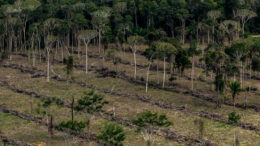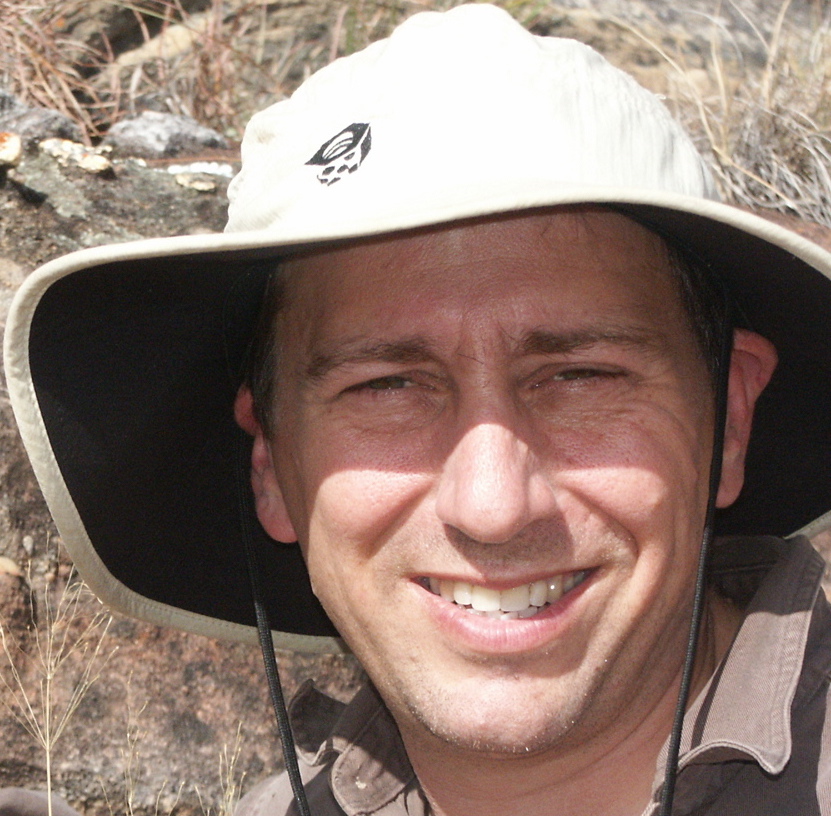A version of this article was originally published by Nature. The Pulitzer Center supported travel for Daniel Grossman, photographer Dado Galdieri and videographer Patrick Vanier.
Luciana Gatti stares grimly out of the window of the small aircraft as it takes off from the city of Santarém, Brazil, in the heart of the eastern Amazon forest. Minutes into the flight, the plane passes over an 18-mile stretch of near-total ecological devastation. It’s a patchwork of farmland, filled with emerald-green corn stalks and newly clearcut plots where the rainforest once stood.
“This is awful. So sad,” says Gatti, a climate scientist at the National Institute for Space Research in São José dos Campos, Brazil.
Gatti is part of a broad group of scientists attempting to forecast the future of the Amazon rainforest. The land ecosystems of the world together absorb about 30% of the carbon dioxide released by burning fossil fuels; scientists think that most of this takes place in forests, and the Amazon is by far the world’s largest contiguous forest.
Since 2010 Gatti has collected air samples over the Amazon in planes such as this one, to monitor how much CO2 the forest absorbs. In 2021 she reported data from 590 flights that showed that the Amazon forest’s uptake — its carbon sink — is weak over most of its area. In the southeastern Amazon, the forest has become a source of CO2.
The finding generated headlines around the world and surprised many scientists, who expected the Amazon to be a much stronger carbon sink. For Carlos Nobre, a climate scientist at the University of São Paulo Institute of Advanced Studies in Brazil, the change was happening much too soon. In 2016, using climate models, he and his colleagues predicted that the combination of unchecked deforestation and global climate change would eventually push the Amazon forest past a “tipping point,” transforming the climate across a vast swath of the Amazon. Then the conditions that support a lush, closed-canopy forest would no longer exist. Gatti’s observations seem to show the early signs of what he forecast, Nobre says.
“What we were predicting to happen perhaps in two or three decades is already taking place,” says Nobre, who was one of a dozen co-authors of the paper with Gatti.
I’ve travelled to Santarém, where the Tapajós River joins the Amazon River, to join Gatti and other scientists trying to determine whether the forest is heading for an irreversible transformation toward a degraded form of savanna. Another big question is whether the forest can still be saved by slowing climate change, halting Amazon deforestation and restoring its damaged lands, something Nobre suggests is possible.
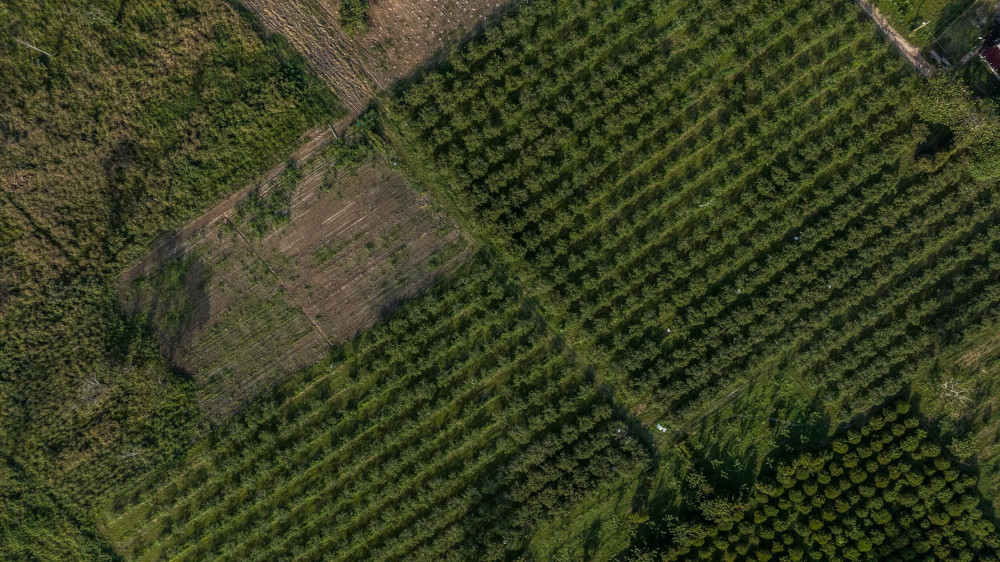
The large-scale deforestation we saw from the air is the most visible threat to the Amazon. But the forest is suffering in other, less-obvious ways. Erika Berenguer, an ecologist at the University of Oxford and Lancaster University, UK, has found that even intact forest is no longer as healthy as it once was, because of forces such as climate change and the impacts of agriculture that spill beyond farm borders. In 2023 a large international team of researchers, including Berenguer, reported that such changes were having effects across 38% of the intact Amazon forest.
Gatti first visited Santarém in the late 1990s, when most of the farming in this part of the Amazon was practiced by smallholders for subsistence purposes. Now she’s astounded by the scale of destruction that has ravaged the jungle. While passing over one huge, newly razed parcel of Amazon forest, Gatti’s voice crackles over the plane’s intercom. “They are killing the forest to transform everything into soybeans.”
Breath of the Forest
The plane that collects air samples for Gatti is housed in a cavernous hangar at Santarém airport. On a rainy day in May, she visits the hangar to meet with Washington Salvador, one of her regular pilots. Gatti checks on the rugged plastic suitcases she has had shipped to Santarém and stored in her tiny office at the airport. Inside them, cradled in foam, are 12 sturdy glass flasks the size and shape of one-liter soft-drink bottles.
Gatti doesn’t need to accompany Salvador when he collects the samples. That’s fortunate, because she gets air sick flying in small planes. The pilots who work with her fly twice a month to specific sampling locations, one in each quadrant of the Amazon basin. Once they reach an altitude of 2,750 feet over a landmark, the pilot presses a button, opening valves and turning on a compressor that fills the first flask with air taken through a nozzle from outside. Then they dive in a steep, tight spiral centered around the landmark, collecting 11 more samples, each at a specified altitude. At the final level, the pilot practically buzzes the canopy, sometimes barely 60 feet above the ground.
Gatti will measure the amount of CO2 in the samples in her laboratory at the National Institute for Space Research. She calculates how much the forest soaks up (or releases) by comparing her measurements with those taken over the Atlantic Ocean, which is upstream of the trade winds that blow over the Amazon.
Scott Denning, an atmospheric scientist at Colorado State University in Fort Collins who has collaborated with Gatti, says that her research has been an “amazingly logistically difficult project. The beauty of Luciana’s work, and also the difficulty of her work, is that she’s done it over and over and over again, every two weeks for ten years.”
Lax Enforcement
Some of the forces transforming the Amazon biome are on display at Santarém’s port, where a trio of eight-story-high silos looms over the city’s fish market. Each silo can hold 20,000 tons of maize (corn) or soya beans, waiting to be shipped to other parts of Brazil and then around the globe. As of 2017 more than 13% of the Amazon’s old-growth forest had been cleared, largely for ranching and for growing crops. Almost two-thirds of the biome is in Brazil, which had lost more than 17% of such forest by that year, and its deforestation rates surged in 2019 during the administration of former president Jair Bolsonaro.
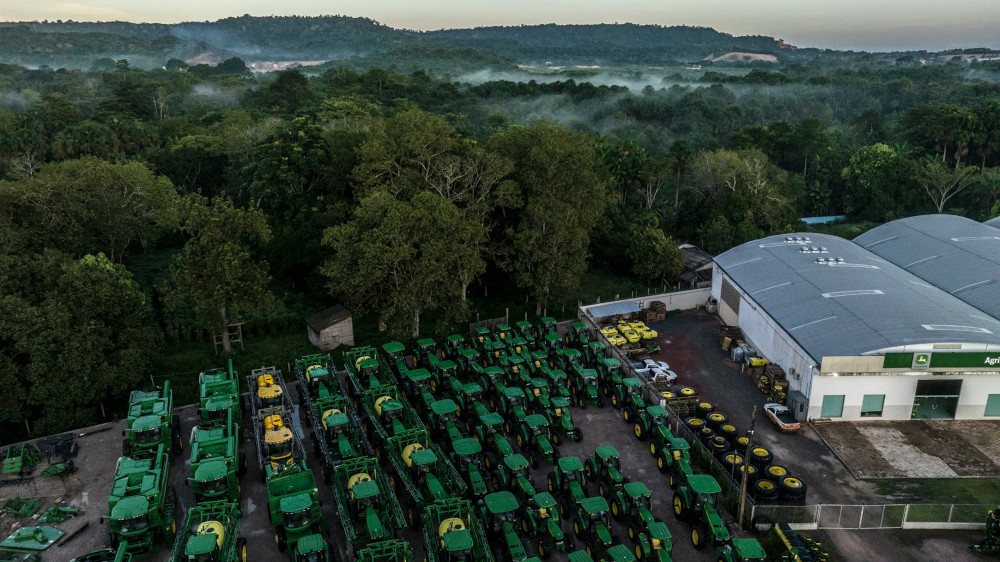
Brazil’s Forest Code is supposed to protect the country’s woods. One key provision requires that in the Amazon, 80% of any plot, a portion known as the Legal Reserve, must be left intact. But many scientists and forest activists argue that lax enforcement makes it too easy to circumvent the law, and that fines for not complying aren’t effective deterrents because they are rarely paid.
Also, people often get title to public or Indigenous land that they illegally occupy and clear, through a process called land grabbing. Philip Fearnside, an ecologist at Brazil’s National Institute for Research in Amazonia in Manaus, says, “Brazil is basically the only country where you can still go into the forest and start clearing and expect to come out with a land title. It’s like the Wild West of North America in the eighteenth century.”
After a one-hour drive south from Santarém, we meet the Indigenous chief — the cacique — of the tiny village of Açaizal in the reservation known as Terra Munduruku do Planalto. He sits on a deck at a rough-hewn wooden table, positioned so he can watch for unwanted outsiders who might drive past.
Josenildo Munduruku — as is customary, his surname is the same as his tribe — says that decades ago, non-Indigenous homesteaders began establishing smallholdings on land that he and his ancestors had occupied for generations. He says that they built houses and opened up cattle pastures without ever asking permission or obtaining legal rights. Previous generations of his community didn’t object. “Our parents did not have this type of understanding — they were not concerned about it,” he says.
The land eventually ended up in the hands of commercial growers, who buy up adjacent plots then raze huge swaths of jungle. “They do not care about these trees from which we extract medicine. For them, these trees are meaningless, useless,” says Munduruku. He says that his community has tried unsuccessfully to get help from the government to stop the logging and to recover some of the land.
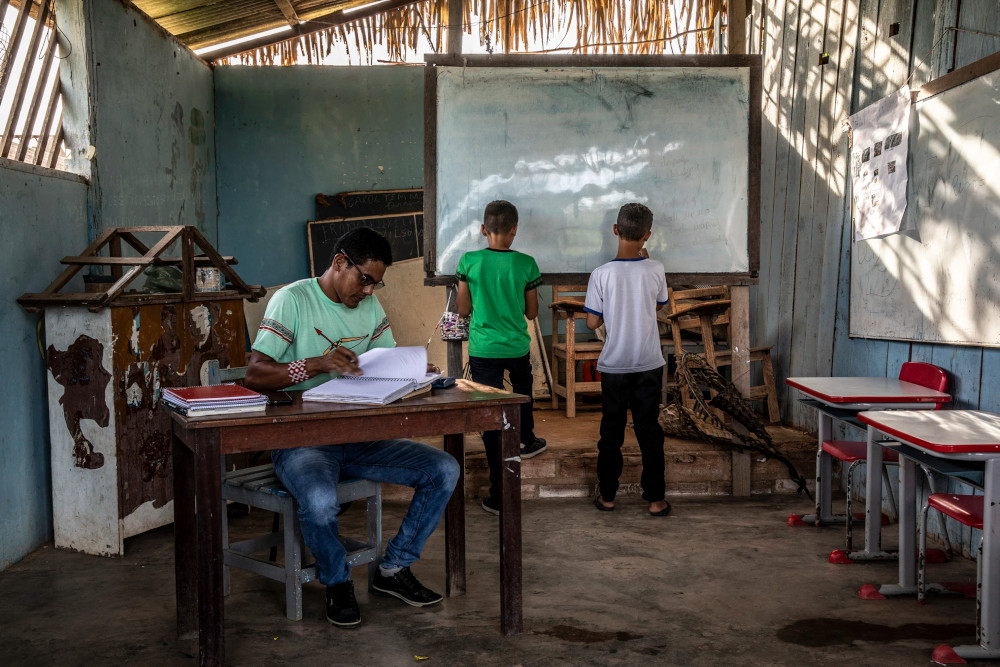
The high value of some tropical hardwoods is an ongoing threat to the forest. Off a highway just west of Açaizal, a timber-mill worker sends a massive log through an industrial saw, which slices off a plank as thick as an encyclopedia. Other workers shape the rough board into standard dimensions.
Ricardo Veronese, the timber mill’s owner, says that his family members, a small lumber dynasty, came to the state of Pará from Mato Grosso state 17 years ago. “We came to Pará because there was plenty of virgin forest left,” he says. The situation today in Mato Grosso is different: Since the mid-1980s, roughly 40% of its rainforest has been cut down.
Every year Veronese’s mill saws up about 2,000 giant trees, mostly for high-end flooring and porch decks in the United States and Europe. With obvious pride, he says that he takes only “sustainably harvested” wood. The huge trunks, stacked by the score in a yard, come from state-regulated logging operations that practice selective logging, he says, where only large trees are cut, leaving the remaining trees to grow and fill gaps in the canopy. And he says that his company follows the government’s rules for selective logging, which require firms to take steps to reduce their impact.
But many ecologists say that the selective logging permitted by the Forest Code is often not sustainable in the sense of preserving the jungle’s stock of carbon sequestered in trunks and retaining its hyper-diverse flora and fauna. That’s because the trees that grow back after a logging operation aren’t the same species as the ones that were removed. The original ones are generally slow-growing species with dense wood, whereas the replacements have less-dense wood. They absorb less carbon in the same space.
Erika Berenguer says that the rules for selective logging on the books are rarely obeyed in practice. She says, for instance, that few companies follow the requirements for limiting road construction or the number of trees that can be cut. “About 90% of selective logging in the Amazon is estimated as illegal, and therefore doesn’t follow any of these procedures.”
Carbon Counting
It takes patience and perseverance to monitor the Amazon for long periods. Berenguer and her team have been measuring 6,000 trees in the Tapajós National Forest every three months since 2015. From this, they estimate changes in the amount of biomass in the forest and how much carbon is stored there.
Censuses such as these, and atmospheric measurements such as Gatti’s, are two common techniques climate scientists use to study the uptake and release of carbon. Each has strengths and drawbacks.
The censuses directly measure the amount of carbon (in the form of wood) in a forest. If paired with measurements of debris on the ground and CO2 released from soil, they can also take account of decay. But censuses look only at a limited number of sites. Atmospheric measurements can assess the combined impact of changes in forests at regional and even continental scales. But it’s hard to decipher the cause of any changes they show.
In 2010 Berenguer began monitoring more than 20 plots in and around the Tapajós forest. Her goal was to compare the carbon uptake of primary forest with that of jungle degraded by selective logging — legal and otherwise. But in 2015 an unprecedented heat wave and drought hit the eastern Amazon.
Eight of Berenguer’s plots were burned, killing hundreds of trees that she’d measured at least twice. She recalls the day in 2015 that she visited a recently scorched plot. Her assistant, Gilson Oliveira, had run ahead. “And he just started screaming, ‘Oh tree number 71 is dead. Tree number 114 is burning,’” Her equipment was destroyed. Some favorite trees had died. “I just collapsed crying; just sat down in the ashes.”
Under normal conditions the Amazon forest is almost fireproof. It’s too wet to burn. But by the time this long dry season ended, fires had scorched 3,800 square miles of primary forest in the eastern Amazon, an area the size of Lebanon, killing an estimated 2.5 billion trees and producing as much CO2 as Brazil releases from burning fossil fuels in a year. Some of Berenguer’s research was, literally, reduced to ashes. Still, she saw the chance to study a problem that is expected to become increasingly common: the combined effect of multiple issues, such as severe drought, fires and human degradation caused by selective logging and clearcutting.
On a tour of where Berenguer’s team works in the Tapajós forest, her field director, Marcos Alves, takes us to a site that burned in 2015. Not long before the fire, illegal loggers removed the biggest, most economically valuable trees. The forest has grown back with plenty of vegetation, including some fast-growing species that are already as thick as telephone poles. But there are none of the giants that can be found elsewhere in the forest.
Alves and Oliveira take Gatti and me to a site two miles up the highway that has never been selectively logged or clear cut, and which escaped the 2015 fires. It’s dimmer here because the high canopy is so thick. And it’s noticeably cooler: Not only do the trees block sunlight, but they also transpire vast quantities of water, which chills the air.
Gatti marvels at the size of a Brazil-nut tree (Bertholletia excelsa) that forms part of the canopy. “It’s amazing! How much water this tree puts into the air.”
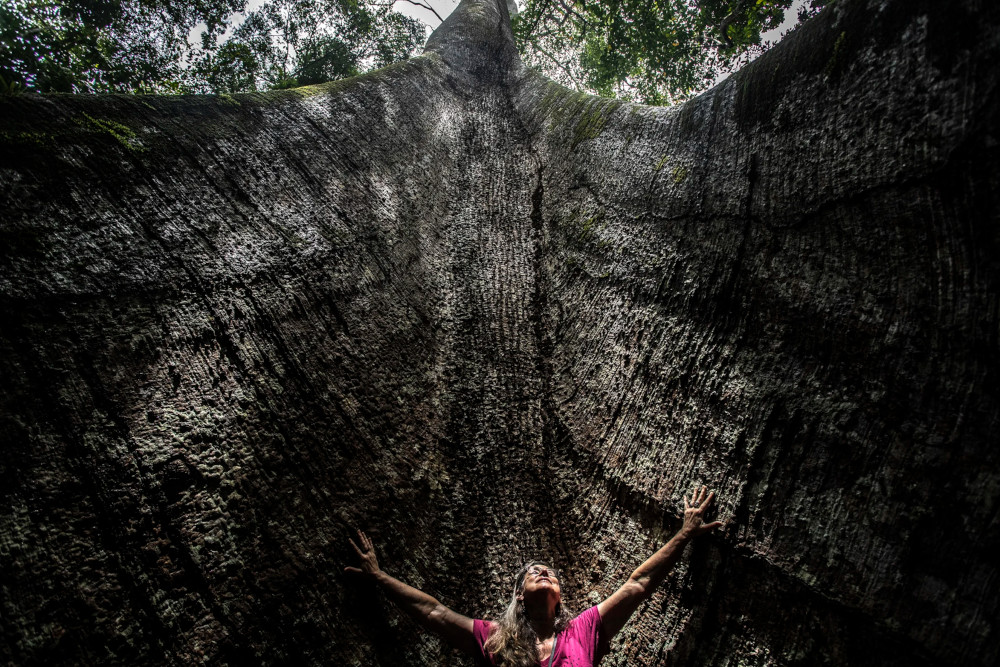
In 2021 Berenguer and a team of co-authors from Brazil and Europe published a study of carbon uptake and tree mortality in her plots during the first three years after the 2015–16 burning. They compared plots that had been selectively logged or had burned in the years before 2015–16, with ones that had not been logged or burnt. The study found that more trees died in degraded plots.
Although plots that weren’t degraded fared the best in her study, Berenguer says that there is no such thing as “pristine forest” anymore. Climate change has warmed the entire Amazon forest by 1°C in the past 60 years. The eastern Amazon has warmed even more.
Amazon rainfall has not changed appreciably, when averaged over the year. But the dry season, when rain is needed most, is becoming longer, especially in the northeastern Amazon, where dry-season rainfall decreased by 34% between 1979 and 2018. In the southeastern Amazon, the season now lasts about 4 weeks longer than it did 40 years ago, putting stress on trees, especially the big ones. Still, Berenguer says that, so far, the measurable effects of climate change on the forest are relatively subtle compared with those of direct human impacts such as logging.
Fading Forests
David Lapola, an Earth-system modeler at Brazil’s University of Campinas, says that deforestation alone can’t explain why the Amazon carbon sink has weakened — and has reversed in the southeast. He and more than 30 colleagues, including Gatti and Berenguer, published an analysis last year noting that carbon emissions resulting from degradation equal — or exceed — those from clearcutting deforestation.
What’s more, even intact forest with no obvious local human impacts is accumulating less carbon than it used to, as seen in some tree-census studies. A 2015 analysis of 321 plots of Amazon primary forest with no overt human impacts reported “a long-term decreasing trend of carbon accumulation.” A similar study published in 2020 reported the same things in the Congo Basin forest — the world’s second-largest tropical jungle.
That’s a change from previous decades, when censuses indicated that such primary forest in the Amazon was storing more carbon. There is no consensus explanation for these slowdowns, or why primary forest was accumulating carbon previously. But many researchers suspect that the carbon gains in earlier decades stem from the positive influence of extra CO2 in the atmosphere, which can stimulate the growth of plants. In some studies that expose large forest plots to elevated CO2, known as free-air carbon enrichment (FACE) experiments, researchers have measured gains in biomass. But in the handful of such experiments in the United States, the United Kingdom and Australia, only one has yet shown an effect that lasted more than a few years. The others either produced only short-term gains or have yet to show any increased growth at all.
All of the forest FACE experiments have so far been conducted in temperate regions, however. And many scientists suspect that tropical forests — and the Amazon, in particular — might follow different rules. The first tropical-forest FACE experiment is finally under construction, 30 miles north of Manaus. Its plumbing system for releasing carbon dioxide into test plots is expected to be started sometime next year. Nobre hopes that the experiment could help to predict whether continued increases in CO2 will benefit the Amazon.
For several decades Nobre and his students have used computer models to forecast how climate change and deforestation will affect the Amazon. The research grew, in part, from work in the 1970s showing that the Amazon forest itself helps to create the conditions that nourish it. Moisture blowing in from the Atlantic falls as rain in the eastern Amazon and is then transpired and blown farther west. It recycles several times before reaching the Andes. A smaller or seriously degraded forest would recycle less water, and eventually might not be able to support the lush, humid forest.
In their 2016 study, Nobre and several colleagues estimated the Amazon would reach a tipping point if the planet warms by more than 2.5°C above preindustrial temperatures and if 20–25% of the Amazon is deforested. The planet is on track to reach 2.5°C of warming by 2100, according to a report released by the United Nations in 2022.
Nobre now wonders whether his earlier study was too conservative. “What Luciana Gatti’s paper shows is that this whole area in the southern Amazon is becoming a carbon source.” He is convinced that, although the Amazon is not at the tipping point yet, it might be soon.
Susan Trumbore, director of the Max Planck Institute of Biogeochemistry in Jena, Germany, is not a fan of using the term tipping point, a phrase with no precise definition, to discuss the Amazon. But she says that the forest’s future is in question. “We all think of a tipping point as it’s going to happen and it’s going to happen fast. I have a feeling that it’s going to be a gradual alteration of the ecosystem that we know is coming with climate change,” she says. Regardless of whether the change will be fast or slow, Trumbore agrees with the majority of scientists who study the Amazon that it is facing serious challenges that might have global ramifications.
Some of those challenges are directly linked to politics in the region. On Aug. 23 Gatti and her colleagues reported that assaults on the Amazon — including deforestation, burning and degradation — had increased dramatically in 2019 and 2020 as a result of declines in law enforcement. And that doubled the carbon emissions from the region.
The fate of the Amazon is on Gatti’s mind as she climbs a lattice tower in the Tapajós forest — one of the landmarks her pilots fly over as they collect air samples. The metal structure rattles and creaks as she ascends. On the deck, 15 stories above the ground, she gazes at the forest spreading in all directions out to the horizon. It looks unblemished. But she says that it is suffering.
“We are killing this ecosystem directly and indirectly,” she says, choking up. She wipes a tear from her eye. “This is what scares me terribly and why it’s affecting me so much when I come here. I’m observing the forest dying.”
Several months after visiting the Tapajós forest, I contact Erika Beringuer to ask about her research plots. Nearly the entire Amazon Basin is experiencing a deep drought combined with a series of intense heatwaves that began in August. Beringuer says that the area around Santarem has been enveloped in smoke from scores of wildfires. There are “hectares and hectares of burned forest,” including at least one of her plots, she says in a text. The smoke is too thick for her to assess the effect on her research so far.
“Something that I find particularly distressing is that feels like 2023 is a remake of 2015,” she says. “How many remakes will we have until there are some actions in place to avoid forest fires?”
![]()

